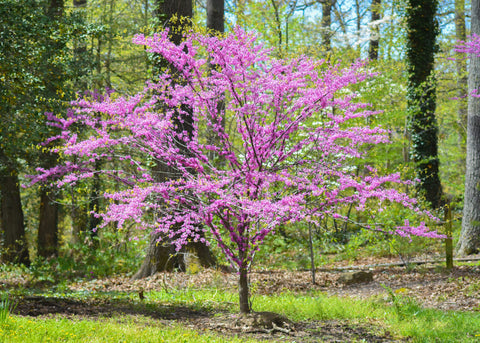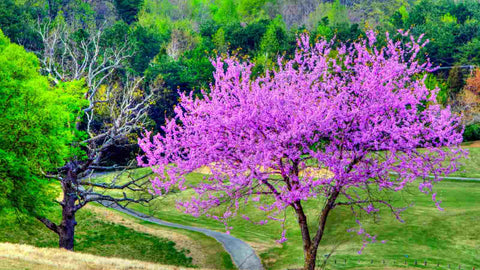

Enhance Your Garden With The Beautiful and Resilient Redbud Tree
The Redbud Tree: A Great Source for a Burst of Colors and Vibrancy in the Garden
The Redbud tree is an ornamental tree known for its pretty red spring flowers, heart-shaped leaves, and garden uses. It is a great choice tree for homemakers, gardeners, and landscapers who wish to have an edgy yet pretty tree in their yard. The Redbud tree is bare-rooted and waiting to add liveliness to your lawn.
Special Characteristics of the Redbud Tree
The Redbud tree is best known for its floral beauty in springtime. Unlike most trees, it bears small pea-like flowers before the appearance of leaves in the subsequent season; these flowers appear in clusters at the base of branches and sometimes directly on the trunk. These flowers vary from deep red, resembling magenta, to light pink, which makes the overall appearance of the tree spectacular and gives trees a black trunk. The floral show takes 2-3 weeks, indicating the spring season's advent.
This perennial plant has heart shaped leaves: during the flowering period, flowers are formed with purple freshly colored and after they have withered, leaves with rich green colorization flowers. It assumes a lovely golden yellow during its fall when most trees cannot offer such interest. Although their size may vary, the tree grows to about Tree30 feet and spreads to about 25-35 feet, making it ideal for use in either a small garden or even large suburban gardens.
Ideal Growing Conditions for the Redbud Tree
The redbud trees are planted in the regions of the USDA hardiness zones that extend from 4 through 9. They stretch across most parts of the country, from cooler winter areas to milder ones. Because of this flexibility, it has become a favorite in the Midwestern and all the southeastern gardens.
Here are the key growing conditions for a healthy and vibrant Redbud tree:
Soil Requirements
Redbuds love loamy soil with a pH between 6.5 and 8. They also require a good drainage system. Although redbud trees can be grown in any type of soil, they are best suited to moderately fertile and deep soils.
Sunlight
They require full sun exposure for at least 4-6 hours daily to encourage good flowering and growth. It is important that in hotter regions of the world, the tree is given some sort of protection for the tree hot afternoon sun to provide some shade.
Watering
Once the Redbud tree is established, it requires a moderate amount of water to be drought-resistant. However, it is crucial to water the plant more frequently during its development process to set the root structure properly. When the weather turns dry, the soil should be moist but not waterlogged too much.
Temperature and Climate
Redbuds are fairly tough and can handle numerous temperatures. In colder zones, half-hardy perennials can also survive the winter if properly prepared and the roots are covered with mulching material. When grown in warm regions, the approximate United States Department of Agriculture Hardiness Zones 8 – 9, the tree requires a sufficient supply of water as well as shade from direct sunlight.
Advantages of Planting a Redbud Tree
The Redbud tree offers both aesthetic and ecological benefits, making it a valuable addition to any property:
• Visual Appeal: Its pretty flowers in spring and handsome leaves in other seasons, so its value is both perennial and seasonal.
• Wildlife Habitat: Flowering to attract pollinating insects, bees, and butterflies; the tree's seeds serve as food to birds.
• Tree's maintenance: While establishing, Redbud trees may call for some attention, but thereafter, they are appropriate plants for a busy homeowner to maintain.
• Versatility: Regardless of the stand-alone tree, a border plant, or a member of a Tree and garden, this tree adds beauty to the entire landscape.
The redbud tree is an example of nature, with its beauty, versatility, and strength in one brilliantly wrapped tree. Growing in the USDA Hardiness Zone 3-9 and offered in the bare root form, this tree is perfect for any gardener who desires trees, which are an almost maintenance-free, spectacular asset to the garden. They have been prepared for transplantation and will establish root systems quickly. If well taken care of, a Redbud tree will provide a beautiful display of flowering and colored foliage for several years.
30 Days
Ships:
Bare root
Zone:
4-9
Exposure:
Full Sun
Deer Resistant:
Yes
Native:
Yes
All the plants were dead when I received them. I'm not sure this is eve n a legitimate company. No one responds to my emails.
The redbuds I received were just what I ordered. They arrived on time. I would do business with this seller again.



